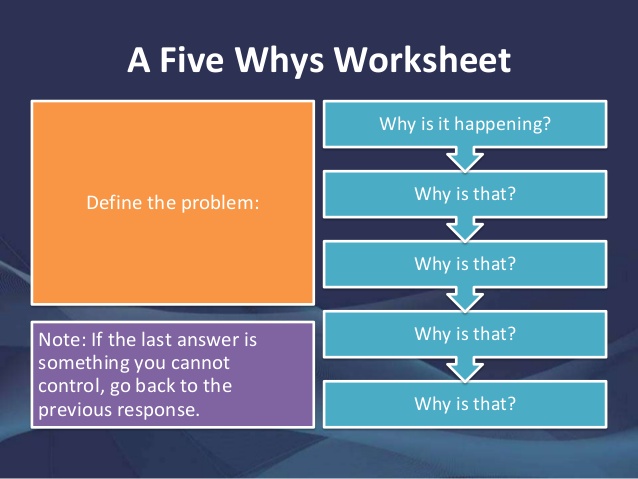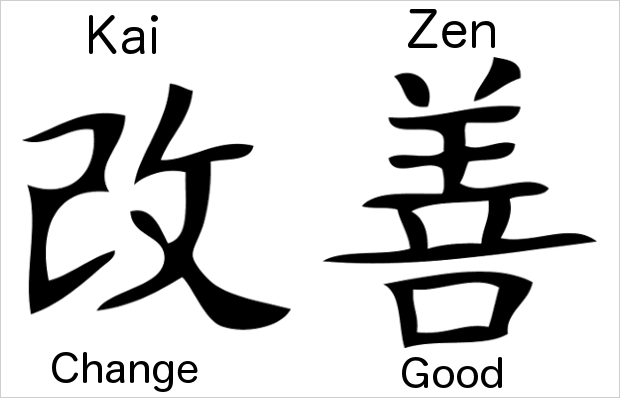
Samir Patel is the President & CEO of GrowthMachines, TheGrowth.Academy and Mentor at 500Startups.
If you missed the first part of How to Build Your Growth Machine, check it out here.
Those who fail to plan, plan to fail. Without clear, focused goals, it’s impossible to succeed. Setting up key performance indicators (KPIs) is essential to drive a clear and focused path to your goals and enable teams to do continuous optimization.
You need to establish the maximum amount you can pay to acquire a user or have them do a specific action. We’ll describe this in general terms, explain each of the KPIs along with their formulas, give you a worksheet with the formulas, and then demonstrate this with an example.
The steps below will provide the framework you need to develop your unique process of testing, experimentation, and systemization of key findings.
1) Establish key channels, KPIs and attribution model
The first step in reaching your marketing goals is to build your plan of attack. Who are your target customers? Where will you find them? Which key performance indicators will you use to assess your progress? And, crucially, how will you build a comprehensive attribution model which tracks user behavior across channels and through your purchase funnel?
To get more specific:
Who are you trying to reach? Your analytics data, internal sales data, and market research help you identify the best audience for your product or service.
Where will you find them? Each channel has its own strengths and weaknesses. For example, if you’re trying to drive direct response, search advertising may be the best place to start. If you’re simply trying to drive awareness first, and have a product that is best presented in rich media form, it may be best to start with display advertising on the Google Display Network, YouTube or Facebook.
How will you measure success? There is a critical relationship between your goals and the metrics by which you’ll measure them. Choosing the right KPIs is all about identifying the key actions you want your users to take, as opposed to getting bogged down in secondary and tertiary actions (and associated metrics).
How will you measure attribution? Each business has a unique sales funnel. Understanding your funnel, and building a measurement system around it, will allow you to understand the true value you’re getting from your marketing channels and customers.
2) Identify goals & constraints
Ask this simple question: What are you trying to do? I mean, really trying to do? It’s not always such a simple question to answer. Each test you perform and every optimization you make should be pointed at achieving a clear and established goal within your growth machine.
For example, you may have a theory (or, better yet, data suggesting) that downloads of your e-book are driving a large amount of conversions due to the high quality of your content marketing. Don’t just run a test (perhaps an AdWords campaign driving traffic to the e-book download page) and hope for more conversions. Instead, establish a goal: a 10 percent increase in conversions over 90 days.
While this test would be limited in scope, the concept applies to your entire growth process: Organize tests and optimizations around clear goals. Do not just make tweaks and hope for the best!
Additionally, it’s important to take stock of your constraints and limitations so as to be mindful of, prepared for, and realistic about the inevitable challenges you face, such as high competition, lack of development resources, insufficient budgets, etc. In other words, be sure to establish goals that you have a realistic chance of actually reaching.
3) Access risk & prioritize
After you’ve established goals and KPIs for all tests, campaigns, initiatives, and optimizations you intend to run, you’ll need to organize and prioritize them. Create a planning document and provide access to your entire growth team. The key here is to prioritize the projects that have the best chance of driving the most improvement first.
For example, don’t waste your time running a test that only applies to two percent of your users. This is not efficient. Think of this as the “80/20” approach to testing and optimization.
4) Learning and ongoing investigation: The “Five Whys” method
The data you’ll collect will give you infinite information on the who, what, where, and when. It will not, however, give you quick answers to the most important question of all: the Why. The Why is what matters. The Why is what allows you to turn data into insights.
As a growth hacker, this should be your favorite word. It’s also protractible. For every answer you receive, ask another Why. This will, unfailingly, get you to the heart of what’s happening inside your growth engine.
The “Five Whys” is a tried and true business method popularized by Six Sigma, and designed to get you to the heart of any problem by approaching every answer with another, deeper pointing question. The appropriate number of Whys is less important than the process itself, though five is usually sufficient.
5) Continuous Optimization: Using Kaizen for growth
Kaizen is a Japanese word, which, in the business realm, refers to the process of continuous improvement. This is the philosophy and practice you must bring to your growth machine: Always testing, improving on what works, and learning from what does not. Beyond all of the tactics, actions, and processes you’ll use for achieving growth, this is the mindset that makes it all possible.
Take an organized approach to your tests and optimizations by creating a shared document containing all past, current, and future tests you’ll run.
OKR Framework
Popularized by Google and Zynga, as well as many other high-growth companies, OKR stands for Objectives and Key Results. It consists of establishing a clear objective and a collection of measureable results upon which to gauge success.
This is important because, far too often, experiments are run with no clear objective in mind. Without taking the time to establish measurable target outcomes, it’s impossible to know what success looks like, and it’s far less likely that results are going to be taken to heart.
Establish OKRs
1) Set your objective based on what’s going to have the greatest impact on your business right away. Put all your firepower where it’ll make the biggest difference!
2) Establish a timeline for testing. It’s best to run tests for over a month but under 90 days. Anything shorter may not give you enough data. Anything longer might see you get lost or distracted.
3) Set multiple Key Results (KRs) based on the level of difficulty. This means having multiple target results for your experiments: KR 1-3.
- KR 1 – 90 percent chance of success. You did a good job.
- KR 2 – 50 percent chance of success. You did a great job.
- KR 3 – 10 percent chance of success. You hit it out of the park!
Example growth via Adwords:
Let’s say a company pairs startups in need of funding with highly accredited investors. Their goal is to lower their CPA for accredited investor signups via AdWords without a significant drop in conversion volume.
A number of changes to their AdWords campaigns have been proposed to make this happen. First, they need to set their OKRs.
1. The Search Network is the area that holds the most potential for improvement of CPA and conversion volume. The focus will be there.
2. Timeline for Tests will be 60 days.
3. Three Key Results will be attempted:
- KR1 — (90 percent change of success): Raise conversion volume by 10 percent by focusing on strategic bid modifications RLSA audience lists.
- KR2 – (50 percent chance of success): Lower CPA by 20 percent by limiting the keywords they buy to high-performing terms only, and setting location bid modifications by income tier.
- KR3 – (10 percent chance of success): Lower CPA by 20 percent and raise conversion volume by 10% by combining these two strategies.
Sample Experiment Process:
Run growth experiments in four steps
This process of experimentation involves four fundamental steps and key documents, which correspond to each stage of the cycle.
1.) Compile Your Tests
You and your team have all sorts of thoughts on how to drive growth, as well as ideas around how they could be tested. These ideas are added to an “inventory” doc, to which the entire team has access, which serves as a sort of ‘idea dump’ for future tests.
Having this centralized document is much more efficient than relying on people to keep their ideas tucked away in their heads. It also serves as a stimulator of new ideas because your team can view and build on the ideas of their team members.
2.) Prioritize
Once you have your collection of ideas, it’s time to prioritize them. Keep a ‘Channel’ document that keeps tabs on all the experiments you’ve run, are running currently, and will run in the near future. This document should also, of course, highlight results and key findings of tests you’ve run in the past, as well as goals and projections for current and future experiments.
The ‘Channel’ doc provides a quick and easy way for team members to understand what tests have been run, when they were run, and what they produced.
3.) Experiment
You’ll also have an associated document for every experiment you run. This document will contain information on every element of the experiment:
- Objective: Why you’re running the experiment
- Hypothesis: The specific results you expect to see from the experiment
- Design: The nitty-gritty of the experiment – implementation, elements, etc.
- Resource Estimation: The resources in terms of time and energy you’ll need from your team to set up and run the experiment
- Results: The data from your experiment
- Findings: The insights from your experiment data
- Action Items: How to take action on and systemize findings from your experiment
4.) Systemize Findings
Once a test has been created, run, and analyzed, it’s time to capitalize on your new insights by systemizing key findings back into your product and marketing. The ‘Findings doc’ contains anything you’ve found to be successful for inclusion into future tests.
The idea is that as you run more tests and gain more data and insights, you then use those data and insights to run smarter tests with refined predictions. The growth process is cyclical, so the systemization phase isn’t the end of the process. Rather, it’s an ongoing process of up-leveling by which teams are constantly gaining greater insight into their customers and markets, and translating those insights into better user experience, better products, and more effective marketing.
Kaizen while you do Big Picture thinking: Zoom In. Zoom Out.
The last step to this process is one of zooming out as a team and taking the time to discuss questions, findings, ideas, and proposed actions related to the tests you’ve performed. This is a crucial part of the process because it’s easy to get so caught up in the implementation and management of current tests that the actual results of completed tests are overlooked.
Schedule a weekly meeting where your team will discuss the following:
- What you’ve learned about your customers. (If you haven’t learned anything as a result of all this testing, something’s seriously wrong.)
- Progress against OKRs: Are you on track? If not, how do you get back on track?
- Deep-dive into experiments: Point person for each experiment discusses key findings.
- How to take action: How can these findings be incorporated into future tests, product enhancements, smarter marketing?
This is a process of constantly zooming in and out. You zoom out to discuss strategy, understand what’s working and what isn’t, and how to take action on key findings. Then you zoom in and actually plan and run new tests, and improve on current tests. You zoom in, you zoom out, over and over again; constantly communicating, collaborating, learning, and improving.
This is your recipe for growth.
Interested in becoming a Growth Guru, join the Growth MBA in a Day, in New York City on November 17.
Get the TNW newsletter
Get the most important tech news in your inbox each week.









